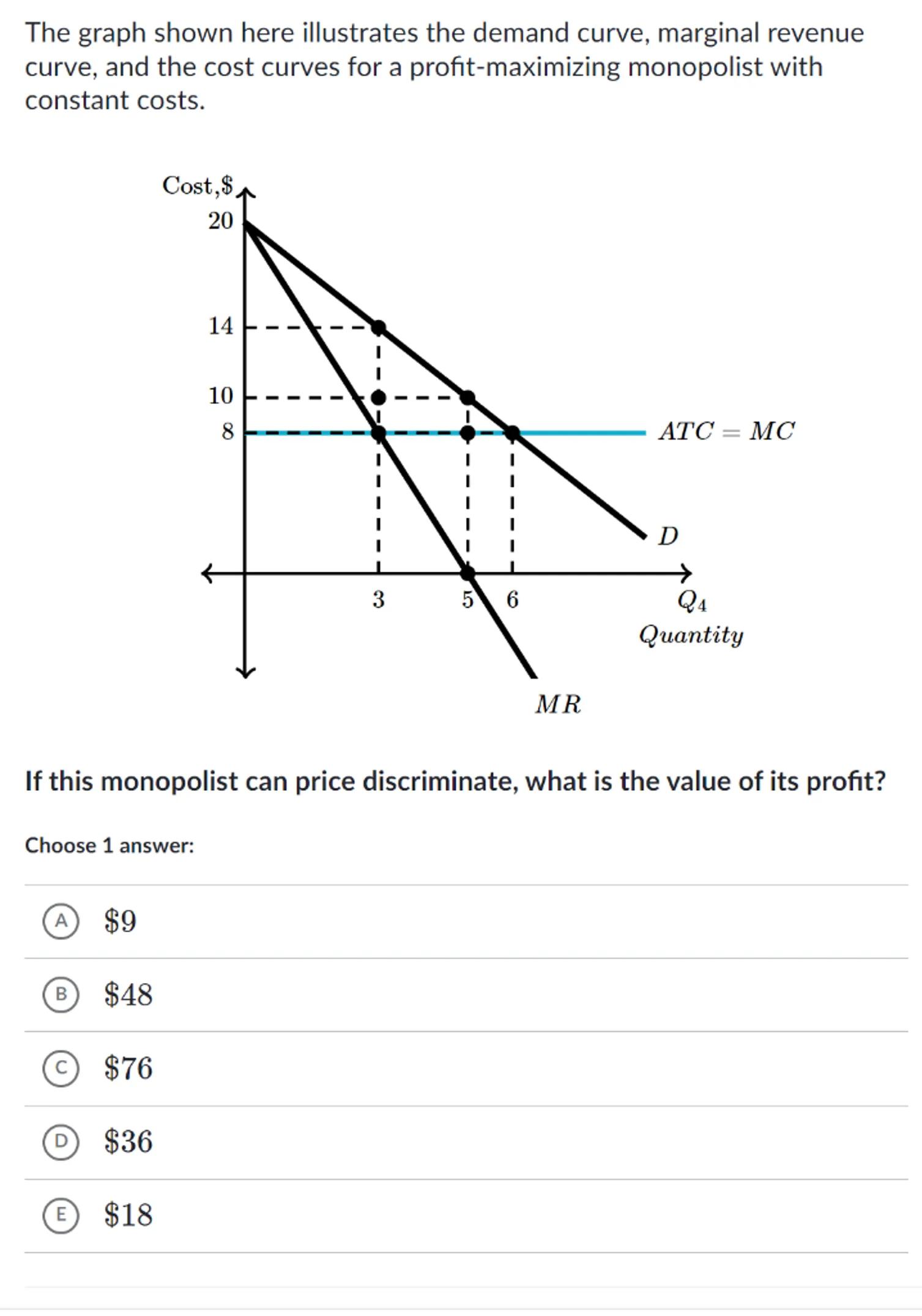
Sia

Question
Microeconomics
Posted over 1 year ago
The graph shown here illustrates the demand curve, marginal revenue curve, and the cost curves for a profit-maximizing monopolist with constant costs.
If this monopolist can price discriminate, what is the value of its profit?
Choose 1 answer:
(A)
(B)
(C)
(D)
(E) 

Answer from Sia
Posted over 1 year ago
Solution
a
Identify the key points on the graph: The intersection of MC and ATC at $8, the intersection of MC and MR at a quantity of 3, and the intersection of MR and demand at a quantity of 5
b
Determine the monopolist's profit under perfect price discrimination: Under perfect price discrimination, the monopolist captures all consumer surplus as profit. The profit is the area between the demand curve and the MC curve up to the quantity where MR = MC
c
Calculate the total revenue: The total revenue is the area under the demand curve up to the quantity of 5. This is calculated as 70
d
Calculate the total cost: The total cost is the area under the MC curve up to the quantity of 5. This is calculated as 40
e
Calculate the profit: The profit is the total revenue minus the total cost, which is 40 = $30
Answer
$30
Key Concept
Perfect price discrimination allows a monopolist to capture all consumer surplus as profit.
Explanation
Under perfect price discrimination, the monopolist sets different prices for each unit sold, capturing the maximum willingness to pay for each unit. This results in the monopolist's profit being the area between the demand curve and the marginal cost curve up to the quantity where marginal revenue equals marginal cost.
Not the question you are looking for? Ask here!
Enter question by text
Enter question by image
Unlock Smarter Learning with AskSia Super!
Join Super, our all-in-one AI solution that can greatly improve your learning efficiency.
30% higher accuracy than GPT-4o
Entire learning journey support
The most student-friendly features
Study Other Question